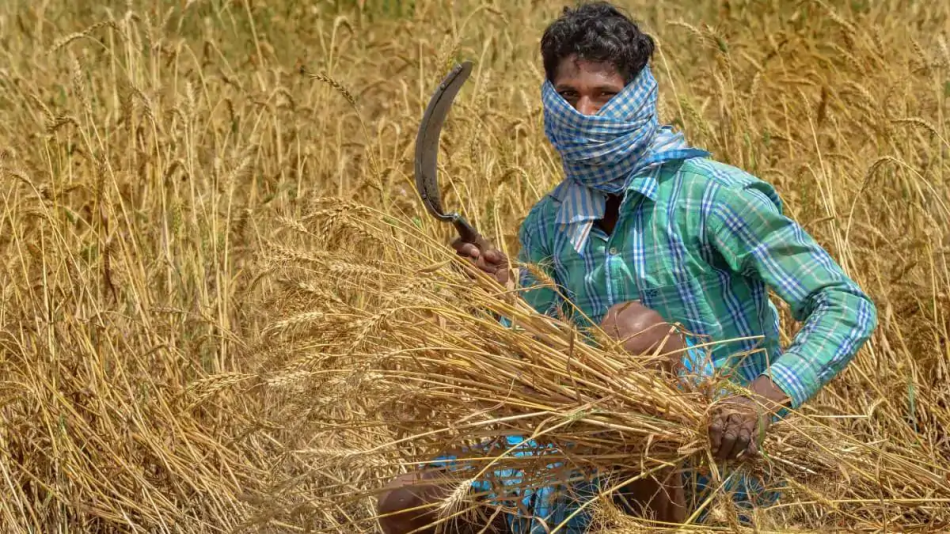SN Misra
India is going through an unprecedented economic crisis, with the estimated GDP growth being scaled down to 8 per cent from an earlier estimate of 15 per cent. The wholesale price index has gone up to 12.94 per cent and consumer price index to 6.30 per cent. The shortfall in tax collection is expected to be Rs 1.5 lakh crore, with fiscal deficit widening. The scenario is further muddied by very high level of unemployment, of around 8 per cent during April, estimated by the CMIE. The labour force participation rate is estimated to be an all-time low of 40 per cent. In this kind of a bleak economic scenario, the real patch of sunshine is the agricultural sector, with the promise of a bumper crop and a handsome buffer stock of 75.2 million tonnes. However, there are disturbing reports that farmers in Muzaffarnagar have been burning their tomato crops due to a glut in production, with price of tomato (Re 1 per kg) not covering even the cost of production. Farmers in Haryana are also destroying capsicum crops as the prices have crashed. JM Keynes had termed this kind of situation to be one of ‘poverty in the midst of plenty.’
In this backdrop, it’s necessary to understand the myriad problems being faced by small and marginal farmers, who produce 70 per cent of the vegetables and 50 per cent of cereals. Of the 121 million agricultural holdings, as per latest NSSO data, 99 million are small and marginal farmers. They have a land share of 49 per cent.
As per a report of NABARD, 50 per cent of the marginal famers are indebted, with average loan amount being Rs 47,000, with 50 per cent of the marginal farmers taking loans from non-banking sources at exorbitant rates. Assured irrigation support which is the key to agricultural productivity is asymmetrically distributed in India, with states like Punjab having close to 98 per cent land irrigated, while states like Odisha languish with 29 per cent and all-India average being 35 per cent. While large farms have access to pumps, and grow water guzzling crops like wheat, too little water is left to small and marginal farmers.
The agricultural strategy of India after Green Revolution in the 60s has centered around HYV seeds, subsidising inputs like fertilisers, and providing high MSP for procurement of wheat and rice. This has made Punjab, Haryana and Western UP the food basket of India, with large farmers having a whooping bonanza, while a large number of small and marginal farmers of East and North East have been left to the mercy of monsoon, uncertain price, and debt trap. Realising the vulnerability of the poor and the enormous potential of populist schemes to garner votes, PDS scheme and Right to Food Act had been unleashed. Loan waivers by several states have also helped poor farmers to come out of debt traps temporarily and invariably achieved electoral bonanza. The APMC Act & market yards are supposed to ensure fair price for farmers. The latest gambit by the Centre is PM Kissan Card and Odisha government’s KALIA scheme which provides Rs 10,000 a year to the marginal farmers so that they come out of the quagmire of indebtedness.
But the central concern of remunerative price and improving productivity of small and marginal farmers has remained unaddressed, as the government pampers the kulaks in Punjab and neglects the poor farmers in BIMARU states. The farmers’ agitation is a shining proof of this huge dichotomous approach, with 8 per cent of farmers clamouring for MSP, while farmers in states like Odisha are more concerned about timely disbursement of KALIA payment and loan waiver.
There is thus a definite need to embrace a pragmatic agricultural policy so that small and marginal farmers get remunerative prices for their produce and are protected against unforeseen vagaries as is being witnessed in several states during bumper crop of vegetables and fruits. The existing cold chain arrangement in the country is awfully inadequate and essentially caters to non-perishable cereals, potatoes, onions and fruits. Perishable vegetables like tomatoes and mangoes do not have the benefit of either being preserved in the cold chain or being converted to manufactured products. As per estimates by the Associated Chambers of Commerce of India, around 13 per cent of vegetables were lost during harvesting, post-harvest activities, handling and storage as against 3 per cent loss for cereals.
Besides building more cold chains and investment in agro industries, the government must encourage use of drip irrigation, which improves productivity two fold and reduces usage of fertiliser by 30 per cent. The focus of ICAR has been on HYV rice and wheat and not on coarse cereals. This has impacted coarse cereal production severely. A working group on marginal farmers in 2013 had suggested that marginal farmers must join farm producer organisations (FPOs). Such collectivisation of farms will make finance accessible from formal sources and achieve economy of scale. The Budget of 2020 had envisaged creation of 10,000 FPOs and allocated around Rs 6,865 crore for facilitating collectivisation of small and marginal farming. Further, the Central government must invest more in agricultural R&D (0.2 per cent of GDP) and scale it up to 1 per cent at least. Contract faming through collectivisation of small and marginal farmers, handholding between corporates, banks and farmers can be a game changer in assuring remunerative price to the farmers.
The farmers’ strike tries to highlight how corporates are going to hijack the interests of the farmers, by denying them a handsome MSP. But it does not address the unmitigated anguish of small and marginal farmers, whose real challenge is how to get remunerative price, improve productivity and enjoy the fruits of shared prosperity. Appropriate public policy and Centre-state synergy can bring positive change in the lives of marginal farmers.
The writer is a leading voice in Development Economics.
